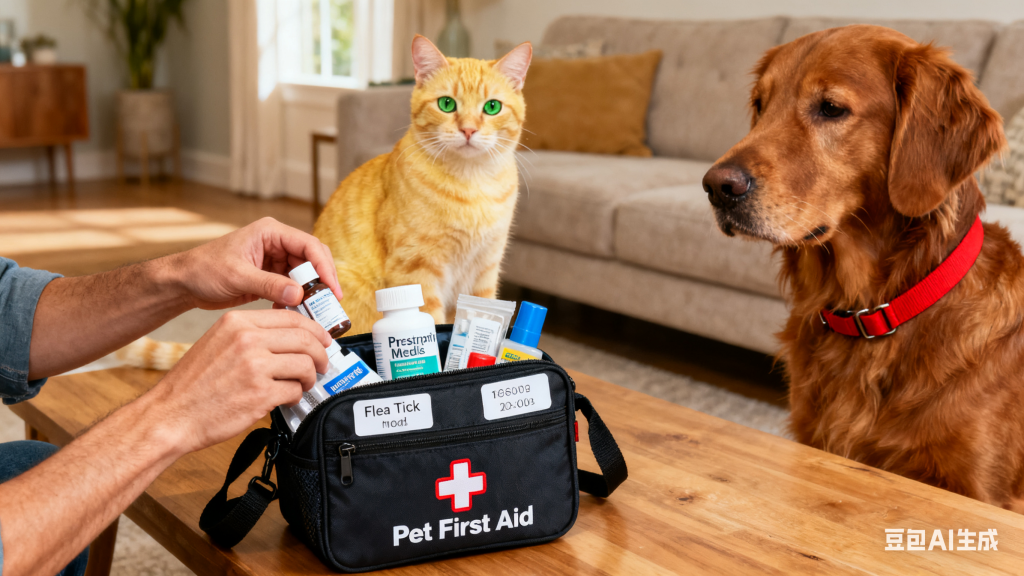When emergencies strike, every second counts — and that includes emergencies involving your pets. Most pet parents have a first aid kit for themselves, but few have one designed for their furry family members. A well-stocked pet first aid kit isn’t just a box of bandages; it’s peace of mind and a potential lifesaver.
Why Every Pet Parent Needs One
Pets are curious creatures. They eat things they shouldn’t, cut their paws on sharp objects, and sometimes get into scary situations when the vet isn’t immediately available. Having the right tools at home helps you stay calm and act quickly, minimizing pain and buying time until professional care is available.

The Essentials for Your Kit
Here’s what a practical — yet pet-focused — first aid kit should include:
- Gauze pads & adhesive tape – For stopping bleeding and covering wounds.
- Pet-safe antiseptic wipes or spray – To clean cuts and prevent infection.
- Digital thermometer – Because fever can be the first sign of trouble.
- Tweezers & blunt-tip scissors – For removing splinters or cutting bandages safely.
- Hydrogen peroxide (3%) – Used under vet guidance to induce vomiting in poisoning cases.
- Saline solution – For rinsing eyes or flushing dirt from wounds.
- Muzzle or soft cloth strip – Even gentle pets may bite when in pain.
- Disposable gloves – To keep wounds and your hands clean.
- Emergency blanket – For shock or sudden temperature drops.
- Copy of veterinary contacts – Including emergency vet clinics and poison control hotlines.
Pro Tips for Going Beyond the Basics
- Customize for Your Pet: Add any prescription meds, flea/tick prevention, or allergy treatments your pet needs.
- Label Clearly: Mark the kit “Pet First Aid” so anyone can grab it fast.
- Portable Version: Keep a smaller travel kit in the car for road trips or park outings.
Maintenance Matters
Check your kit every few months — medicines expire, and gauze gets dusty. Replace anything used right away so you’re always ready.
The Big Picture
Building a pet first aid kit isn’t just a crafty weekend project — it’s part of responsible pet parenting. The best outcome is that you never need it. But if you do, you’ll be thankful you took the time to prepare.
